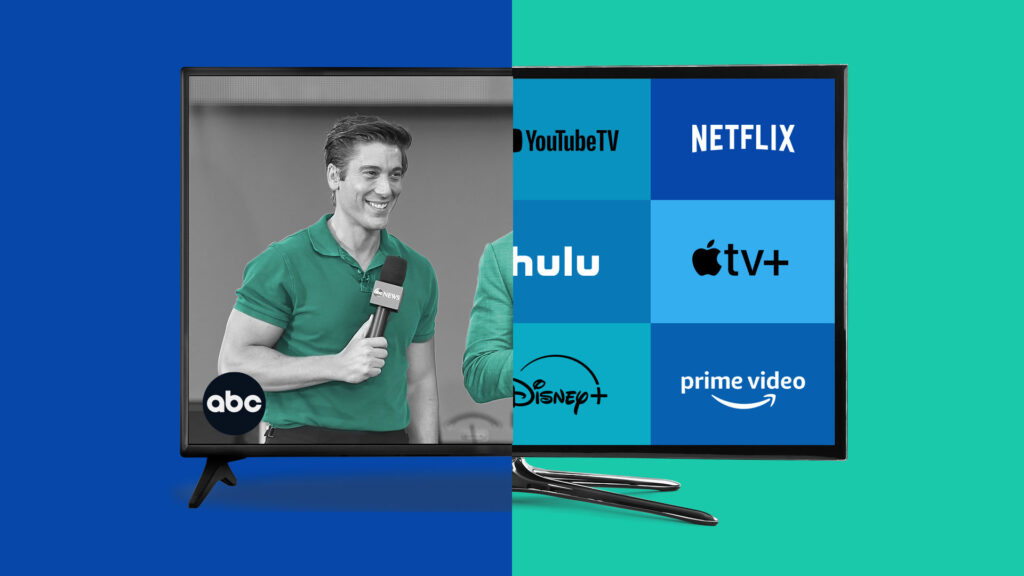OTT vs. Linear TV: Choosing the Right Platform for Your Strategy

As television evolves beyond traditional formats, the decision between Over-The-Top (OTT) platforms and Linear TV becomes a critical one for advertisers and content creators. This choice isn’t just about how content is delivered—it’s about understanding audience behaviors, maximizing reach, and ensuring a solid return on investment. Below, we explore the key differences between OTT vs Linear TV, helping you determine the best fit for your needs.
Understanding Linear TV
Linear TV refers to traditional broadcast television delivered through cable, satellite, or terrestrial signals. Content is scheduled at specific times, and viewers tune in accordingly. Key attributes include:
- Broad Audience Reach: Linear TV remains effective for reaching older demographics or areas with limited internet access.
- Fixed Schedules: Content airs at pre-set times, fostering shared viewing experiences, particularly for live events like sports and news.
- Ad Exposure: Viewers often encounter ads during scheduled programming, though ad-skipping tools such as DVRs can limit impact.
While Linear TV offers wide reach, its fixed schedules and decreasing younger audience engagement present challenges in today’s on-demand culture.
The Rise of OTT Platforms
OTT platforms deliver content directly over the internet, bypassing traditional broadcasting methods. Services like Netflix, Hulu, Disney+, and YouTube TV allow viewers to watch what they want, when they want. Features include:
- On-Demand Access: Viewers can watch at their convenience, rather than adhering to a schedule.
- Targeted Advertising: OTT platforms leverage user data to serve highly personalized ads, boosting engagement and conversion rates.
- Global Reach: OTT enables content distribution to audiences worldwide without the need for regional broadcasting infrastructure.
Despite their flexibility, OTT platforms face challenges like competition for viewer attention and the fragmentation of available services.
Key Factors in Choosing Between OTT and Linear TV
1. Audience Considerations
Understanding your target audience is essential for platform selection:
- Demographics:
- Linear TV remains effective for older viewers and regions with limited internet access.
- OTT platforms are preferred by younger, tech-savvy audiences with a preference for streaming.
- Viewing Habits:
- Linear TV suits audiences who value communal viewing (e.g., live events).
- OTT appeals to those who prefer binge-watching and personalized viewing schedules.
- Geographic Reach:
- Urban areas with widespread internet access lean towards OTT.
- Rural areas may still rely more on traditional television.
2. Advertising Goals
Your campaign objectives can guide platform choice:
- Brand Awareness:
- Linear TV excels at broad awareness due to its large, undifferentiated reach.
- OTT is better for targeted campaigns aimed at specific audience segments.
- Engagement & Conversion:
- OTT offers advanced metrics like click-through rates and purchase conversions.
- Linear TV metrics focus on estimated viewership and overall reach.
- Ad Skipping:
- DVR and fast-forwarding allow viewers to skip ads on Linear TV.
- OTT uses unskippable or interactive ads to ensure message delivery.
3. Budget and ROI
Cost considerations vary significantly between the two platforms:
- Cost Efficiency:
- Linear TV ads, especially in prime-time slots, can be expensive due to production and placement costs.
- OTT provides flexible pricing, allowing advertisers to target niche audiences at lower costs.
- Return on Investment (ROI):
- OTT’s detailed analytics enable precise measurement of ROI.
- Linear TV’s ROI is less precise but remains strong for mass-market campaigns.
4. Content Strategy
Your content type and distribution strategy also influence platform choice:
- Live Content: Linear TV is ideal for live events like sports and news, where real-time engagement is crucial.
- On-Demand Content: OTT is better suited for serialized content, movies, and niche programming.
- Content Control: OTT offers more flexibility in release timing and promotional strategies, while Linear TV adheres to fixed programming schedules.
Emerging Trends and the Future of TV
As technology advances, the distinction between OTT and Linear TV continues to blur:
- Convergence: Hybrid services like Hulu + Live TV and YouTube TV combine live TV with on-demand content.
- 5G and Streaming: Faster internet speeds are driving the adoption of OTT, even in previously underserved areas.
- Ad Tech Evolution: Linear TV is integrating digital ad technologies, while OTT platforms refine their personalized ad delivery.
Making the Right Choice
The decision isn’t necessarily about picking one platform over the other—it’s about leveraging the strengths of both to meet your objectives. A hybrid approach often provides the best results:
- Use Linear TV for broad, impactful campaigns or live events that benefit from real-time viewership.
- Leverage OTT platforms for data-driven targeting, on-demand content, and interactive advertising.
By staying flexible and keeping a pulse on audience behavior, marketers and content creators can craft effective strategies that maximize engagement and ROI in an ever-changing media landscape.






